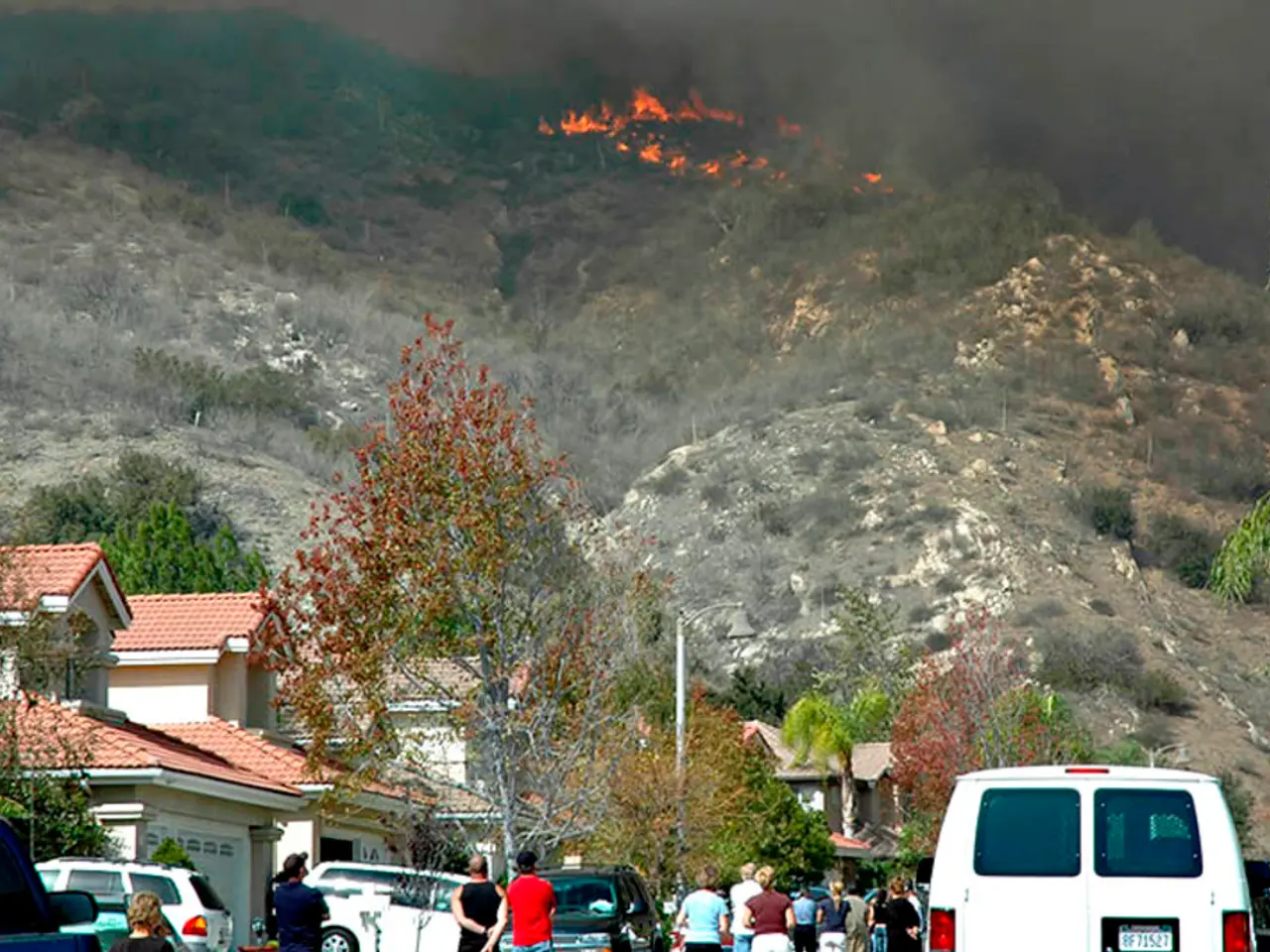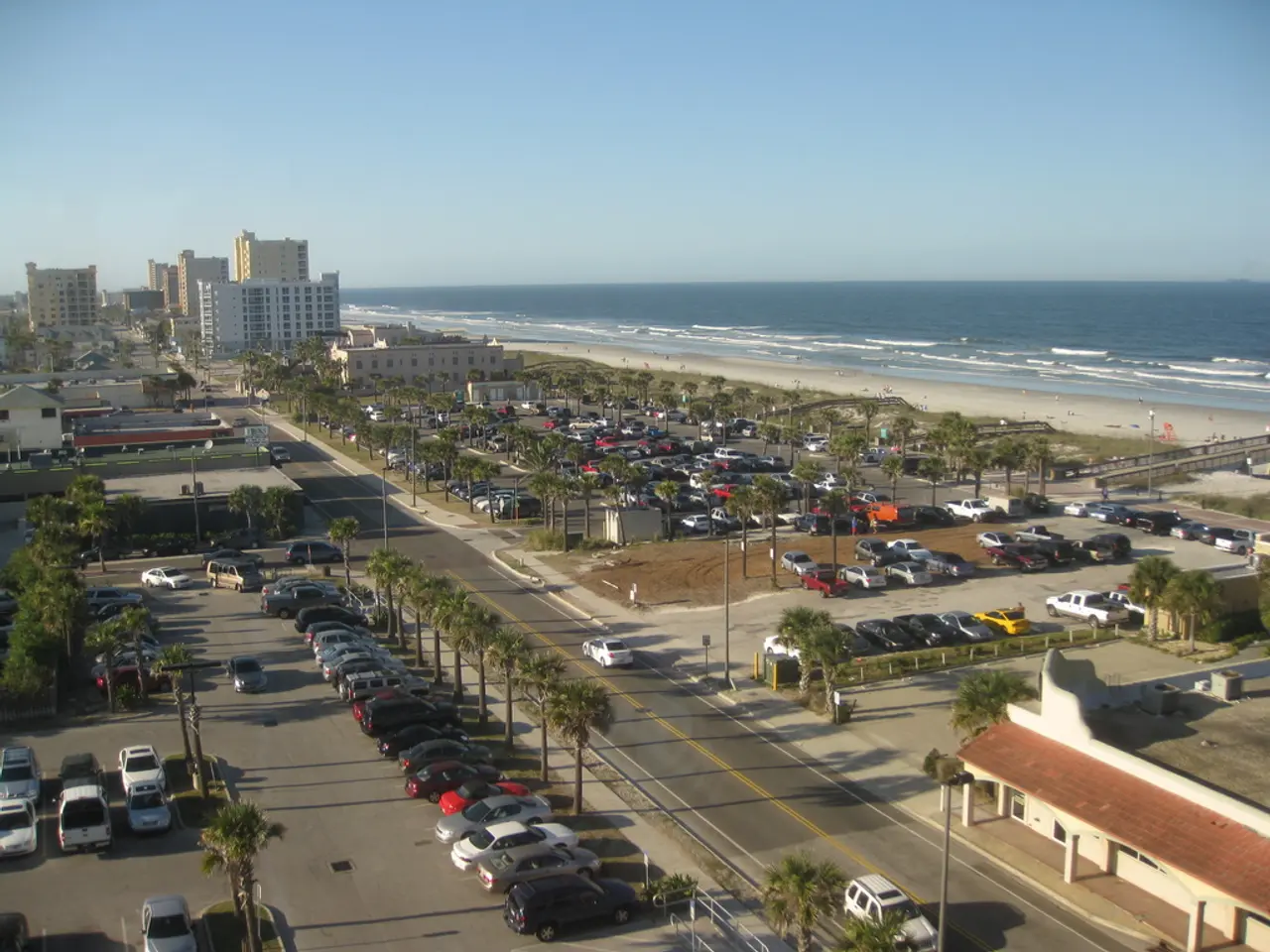Challenges Arise in Urban Planning Due to Climate Issues
Indian cities are grappling with the increasing challenges posed by monsoon-induced flooding, as heavy rainfall events become more frequent and intense. Recently, urban areas like India's fifth-largest economic hub faced disruption due to heavy rainfall, with taxis and autorickshaws forced off the streets, and people stranded in transit for extended periods due to waterlogging.
To address these issues, urban planning in Indian cities needs a holistic overhaul. Adopting the concepts of Sponge City and Micro-Detention systems can help manage rainwater effectively, reducing flooding during monsoon events. This approach involves preserving and restoring natural drainage channels, lakes, and wetlands, enforcing building codes that require rainwater harvesting, detention tanks, permeable surfaces, and retrofitting urban infrastructure with permeable materials and green cover.
Decentralized stormwater capture in residential and industrial zones, integrated into urban renewal programs like Smart Cities and AMRUT, can help scale these efforts. Technological aids such as IoT-based flood sensors, GIS mapping for flood-prone areas, underground modular tanks for stormwater, and green roofing systems also enhance urban flood resilience without disrupting city functionality.
However, the solution is not limited to infrastructure development. Individual and community behaviors play a crucial role in managing flood risks. Public awareness campaigns focusing on reducing waste disposal in drains, avoiding encroachment on floodplains and natural waterways, and engaging citizens in maintaining drain cleanliness can prevent blockages that exacerbate flooding. Community-level adoption of rainwater harvesting and decentralized micro-detention measures can complement urban planning interventions.
Learning from global best practices is essential. Countries like the Netherlands and China have implemented nature-based solutions, floodplain conversion to green resilient areas, and innovative flood protection infrastructure. Indian cities can benefit from these strategies to enhance the resilience of their urban systems to monsoon-induced flooding.
In the face of climate change, a 360-degree reassessment of existing routines for both people and companies is necessary. People should consider living closer to their workplace, adopting carpooling, and choosing schools closer to home for their children. Companies should spread out their facilities within a city or switch to remote working models during periods of weather crisis.
State and Central governments must reevaluate their urban planning in light of extreme weather events. Legacy drainage systems in metro cities are designed for historical averages and not for the phenomenon of intense rains. Garbage strewn on streets clogs drains, leading to waterlogging, a problem exacerbated by poor urban planning and subpar construction quality of public infrastructure.
In conclusion, improving urban planning must combine ecosystem restoration and green infrastructure with modern technologies, integrated policy enforcement, and community engagement to better manage the increasing flood risks from intense monsoon rainfall in Indian cities. A comprehensive approach that addresses both the physical and behavioural aspects of urban flooding is crucial for ensuring the resilience and sustainability of our cities in the face of climate change.
The integration of environmental-science concepts, such as Sponge City and Micro-Detention systems, will play a significant role in addressing monsoon-induced flooding in Indian cities. This will involve preserving natural drainage channels and promoting building codes that include rainwater harvesting, detention tanks, permeable surfaces, and green cover.
Adopting Green Roofing systems, flood sensors, underground modular tanks for stormwater, and GIS mapping for flood-prone areas can also enhance urban flood resilience without compromising city functionality. However, it's important to note that addressing climate-change-induced flooding goes beyond infrastructure development. General-news articles should emphasize the need for public awareness campaigns and community engagement in managing flood risks, such as reducing waste disposal in drains and preventing encroachment on floodplains and natural waterways.








